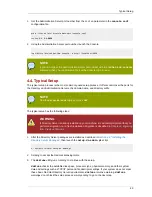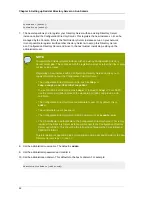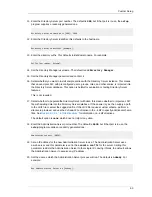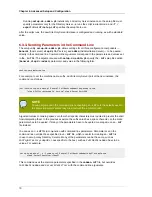
Typical Setup
57
example.com
), suffix (for example,
dc=example, dc=com
), and port numbers (
389
for the
Directory Server instance and
9830
for the Administration Server).
When the
setup-ds-admin.pl
script is done, then the Directory Server is configured and running.
To log into the Directory Server Console to begin setting up your directory service, do the following:
1. Get the Administration Server port number from the
Listen
parameter in the
console.conf
configuration file.
grep \^Listen /etc/dirsrv/admin-serv/console.conf
Listen 0.0.0.0:
9830
2. Using the Administration Server port number, launch the Console.
/usr/bin/redhat-idm-console -a http://localhost:9830
NOTE
If you do not pass the Administration Server port number with the
redhat-idm-console
command, then you are prompted for it at the Console login screen.
5.4. Typical Setup
The typical setup process is the most commonly-used setup process. It offers control over the ports for
the Directory and Administration Servers, the domain name, and directory suffix.
WARNING
If Directory Server is already installed on your machine, it is extremely important that you
perform a migration, not a fresh installation. Migration is described in
Chapter 8, Migrating
from Previous Versions
.
1. After the Directory Server packages are installed as described in
Section 5.2, “Installing the
Directory Server Packages”
, then launch the
setup-ds-admin.pl
script.
# /usr/sbin/setup-ds-admin.pl
NOTE
Run the
setup-ds-admin.pl
script as
root
.
2. Select
y
to accept the Red Hat licensing terms.
3. The
dsktune
utility runs. Select
y
to continue with the setup.
Содержание DIRECTORY SERVER 8.0
Страница 32: ...24 ...
Страница 46: ...38 ...
Страница 90: ...82 ...
Страница 98: ...90 ...
Страница 128: ...120 ...






























